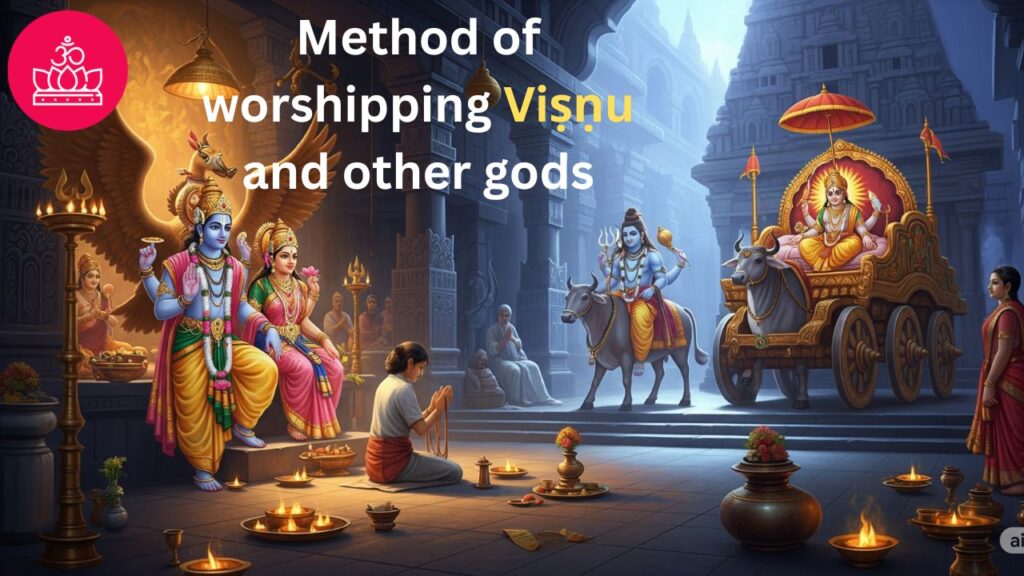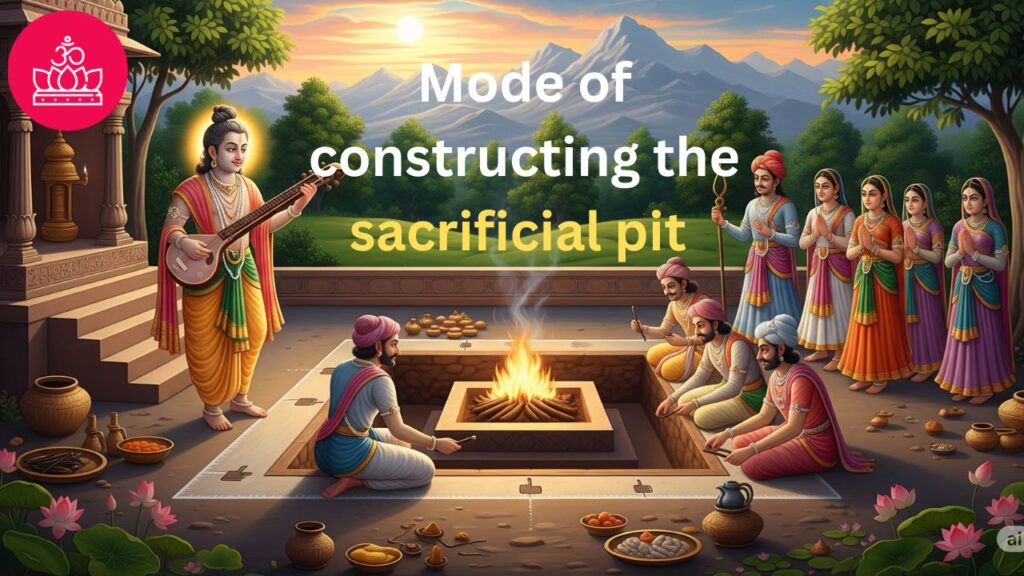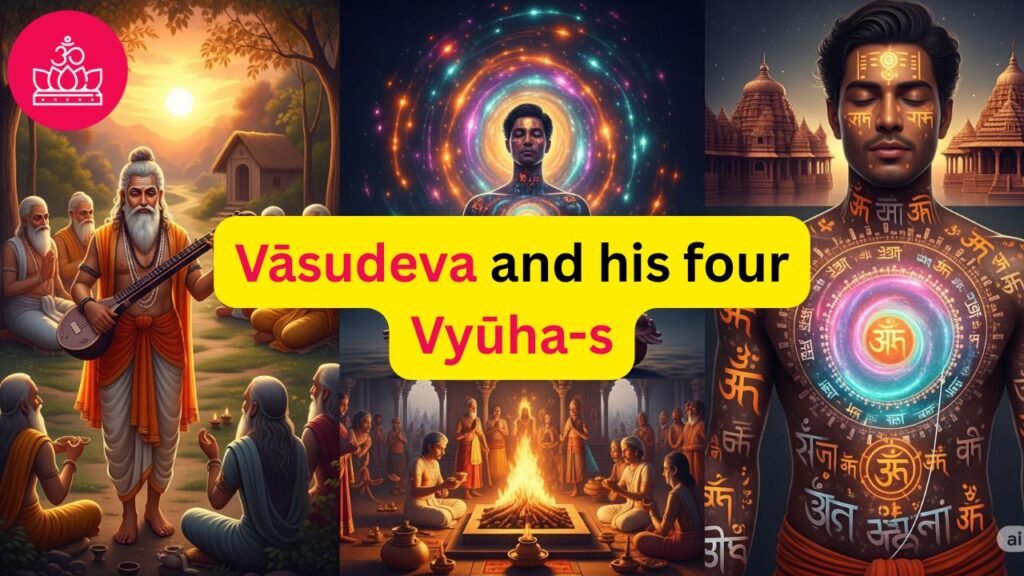The Comprehensive Ritual: A Guide to the Worship of Vishnu and Other Deities
As told in: Agni Purana – Chapter 21: Method of worshipping Viṣṇu and other gods
This chapter of the Agni Purana unveils a profound and detailed method for worshipping not only Vishnu, the preserver, but also a vast pantheon of Hindu deities. It transcends a mere recital of mantras; it presents a holistic ritual, a journey of devotion encompassing the cosmos and the inner self. The narrative, delivered by the sage Narada, unfolds as a systematic guide, emphasizing the interconnectedness of all beings and the power of focused reverence.
# The Invocation of the Divine Family
The chapter commences with Narada’s declaration: “I will (now) describe the general method of worshipping Vishnu and others as well as the mantras (mystic formulae) which yield good to all.” This sets the stage, immediately establishing the expansive scope of the ritual. The invocation begins with a salutation to Acyuta, Vishnu, and his entire divine family, a recognition of the interconnectedness of the divine realms. The worshipper isn’t merely addressing a single deity but acknowledging the vast cosmic order.
This initial invocation is followed by a cascade of salutations, each invoking a specific aspect of the divine or the natural world. Dhātṛ and Vidhātṛ, the creators, are honored alongside the sacred rivers Ganga and Yamuna, symbols of purity and flow. The nidhis (treasures), the prosperity of Dwaraka (Krishna’s city), and the Vastu-deity (the presiding deity of the housesite) are included, demonstrating the ritual’s grounding in both the spiritual and material realms. The invocation extends to Shakti (divine feminine energy), Kurma (the tortoise avatar of Vishnu), Ananta (the serpent Sesha), the Earth, righteous knowledge, detachment from the world, omnipotence, and even unrighteousness itself – a recognition of the duality inherent in existence. The lotus, in its entirety – root, stalk, filament, and pericarp – is also invoked, symbolizing purity and spiritual growth. The Vedas, the ages (Yugas), the gunas (qualities), and the celestial regions are all included, further emphasizing the comprehensive nature of this worship.
This initial invocation, far from being a mere list, is a powerful act of establishing a connection with the entire cosmic order. It underlines the understanding that the divine permeates all aspects of existence, from the grandest celestial bodies to the smallest elements of nature.
# Embracing the Manifestations: Vishnu and His Attributes
The worship then focuses on Vishnu, moving from the general to the specific. The worshipper is instructed to venerate Vishnu’s attributes: his heart, head, coat of mail, eyes, and weapons – the conch, disc, mace, and lotus. The Śrīvatsa mark on Krishna’s chest and the Kaustubha gem, symbols of auspiciousness and divine grace, are also included. The garland of wood-flowers, worn by Krishna, is invoked, adding a touch of earthly beauty to the divine. Lakshmi, Vishnu’s consort, representing prosperity and fortune, is also included, followed by Pushtī (nourishment) and Garuda, Vishnu’s mount. The Guru, or spiritual teacher, is also venerated, highlighting the importance of guidance in the spiritual path. The list extends to other major deities: Indra (king of the gods), Agni (fire god), Yama (god of death), and Nairṛta (god of the southwest direction), along with the elements of water, wind, and Kubera (god of wealth).
This meticulous attention to detail underscores the idea that the divine is not merely an abstract concept but is present in every aspect of creation, every element, and every relationship. The ritual becomes a way to acknowledge and honor this divine presence in its myriad forms.
# The Shiva Pantheon and the Cosmic Dance
The ritual then shifts to the worship of Shiva, the destroyer and transformer. The invocation begins with Nandi, Shiva’s bull mount, emphasizing the importance of devotion and service. The sequence proceeds to include Mahakal (Shiva), Ganga and Yamuna, the ganas (Shiva’s attendants), and other associated deities. The various aspects of the divine feminine, represented by goddesses like Vama, Jyeshtha, Raudri, Kali, and others, are also included, further illustrating the diverse expressions of divine energy. The mantras employed in Shiva’s worship are short and powerful, focusing on specific syllables (“Ham, Hum, Ham”) and highlighting the different forms and aspects of Shiva.
The inclusion of Shiva’s worship alongside Vishnu’s is crucial. It highlights the complementary nature of the divine forces in the universe – creation, preservation, and destruction – all working together in a cosmic dance of balance and renewal. The worshipper is encouraged to recognize and respect the entirety of this cosmic order.
# Celestial Deities and the Solar System
The detailed instructions then move towards the worship of the Sun, another celestial deity of immense importance. The worshipper is instructed to venerate Uccaiḥśravas (Indra’s horse), the radiant Arun (charioteer of the Sun God), the Moon, twilight, Skanda (Kartikeya), and several female divinities associated with the sun’s power and radiance. The mantras for solar worship are similarly structured around specific syllables, each carrying a symbolic weight. The various aspects of the sun – its rays, its head, its flames, and its essence – are all meticulously invoked. This section also extends to the other planets – Soma (Moon), Angaraka (Mars), Budha (Mercury), Jiva (Jupiter), Shukra (Venus), and Shani (Saturn), along with Rahu and Ketu (shadowy planets) and other celestial entities.
This detailed worship of the solar system underscores the connection between the earthly and the celestial realms. It reflects the ancient Indian understanding of the cosmos as a living, interconnected entity, with the deities embodying the forces and energies that govern it.
# The Power of Mantras and the Goal of Liberation
The chapter concludes with instructions on the mantras to be used when worshipping the seats of the images of Vishnu and other deities. The power of mantras is emphasized, particularly the syllable “Hrim,” which is described as capable of captivating the three worlds. The ritual is not merely a series of actions; it’s a powerful invocation of divine energy through the use of sacred sounds. The worship on the fifth day (pañcami) is highlighted as particularly auspicious, promising victory in battles. The chapter emphasizes the importance of offering homa (fire oblations), using sesame seeds and ghee, to enhance the efficacy of the mantras and to invoke the blessings for dharma (righteousness), kama (desire), artha (wealth), and moksha (liberation). The ultimate goal, as implied, is not just material prosperity but spiritual liberation.
The emphasis on the use of mantras and the offering of homa connects the ritual to the deeper spiritual dimension. The mantras are not just sounds; they are vibrational energies that can connect the worshipper to the divine, while the homa offering represents the purification and transformation of the devotee’s own inner being.
# Conclusion: A Path to Holistic Harmony
The Agni Purana’s description of this comprehensive ritual is not merely a guide to external practices; it’s a path to inner transformation. The meticulous attention to detail, the inclusion of a vast array of deities, and the emphasis on mantras and homa all point towards a holistic approach to worship. The ritual is designed to connect the worshipper with the entire cosmic order, fostering a sense of harmony and balance within the individual and between the individual and the universe. The ultimate aim is not merely the fulfillment of desires but the attainment of dharma, artha, kama, and ultimately, moksha – a state of liberation from the cycle of birth and death. This chapter provides a deep insight into the ancient Indian understanding of the divine and the path towards spiritual fulfillment.



